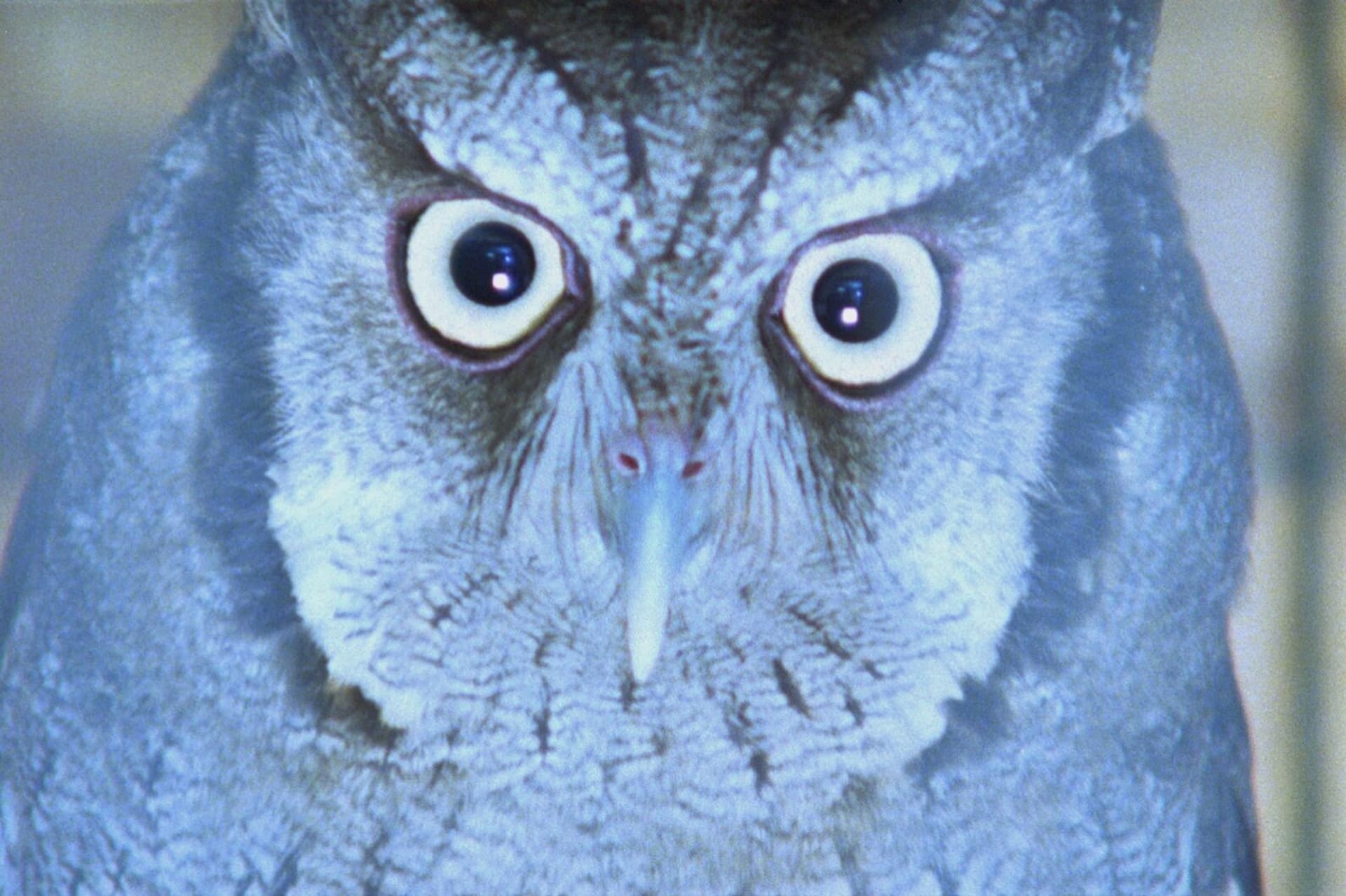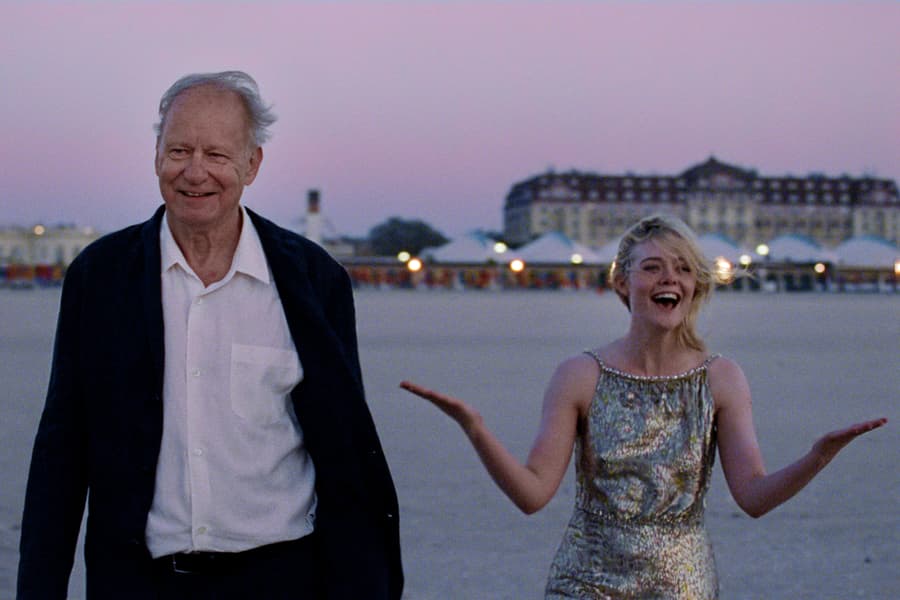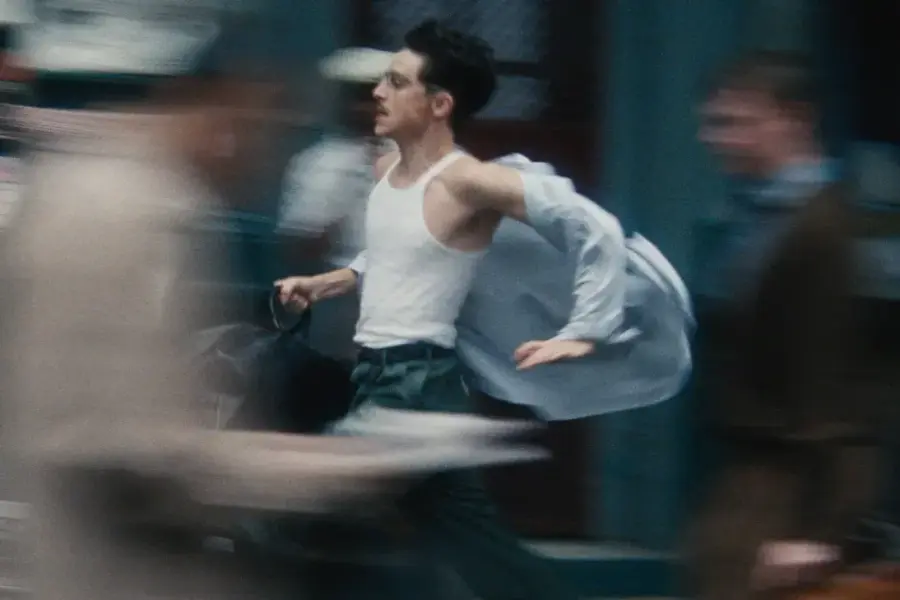Há Terra! + It Is Night In America
Onsdag 10.01.24

Velkommen til en visning og samtale med den anerkjente brasilianske kunstneren og filmskaperen Ana Vaz.
Vaz' visjonære filmer og installasjoner er taktile og kraftfulle kritikker av kolonialismens logikk om dominans: over et folk, et land, over dyr og planter. På poetiske og lekne måter knytter hun koloniale spor av makt, separasjon og utvinning til filmens historie og til det konvensjonelle filmspråket. I sitt manifest "Filming in the Dark" (2018) skriver hun:
Jeg ser på film som et perspektivistisk medium, et medium som er i stand til å produsere delvirkeligheter, bygge verdener og verdensformer fra utallige perspektiver. I en kyborgallianse med kameraet blir film et medium som er i stand til å transformere og avhumanisere menneskelig persepsjon, løsrive våre kunnskapsrike kropper fra maktens tyranni, fra fornuften og den lineær tid. I denne alliansen mellom kroppen og "cine-maskinen" ville det ikke være virkeligheter, bare delperspektiver, kimeriske skapninger, verdensformer som foretrekker del fremfor helhet, stammene fremfor folket, horisonten fremfor figurene, jorden fremfor dens helter.
Vi viser det ekstatiske filmdiktet Há Terra! (2016) sammen med Vaz' prisbelønte første spillefilm It is Night in America (É Noite na América, 2022). Visningen etterfølges av en samtale mellom Vaz (via zoom) og hennes kollega i COYOTE-kollektivet: journalist Elida Høeg.
Arrangementet er del av programserien Et annet sted, her inne og er støttet av Norsk Filminstitutt. I forbindelse med serien deler vi nyskrevne essayer og filmer på KH Hjemmekino.
Om filmene
HÁ TERRA! (2016, 13 min, 16 mm transferred to HD)
“Há terra! is an encounter, a hunt, a diachronic tale of looking and becoming. As in a game, as in a chase, the film errs between character and land, land and character, predator and prey.” This is how Ana Vaz describes her 16mm cine-poem. Darting camera movements appear to chase a young maroon girl through the high grass. The present-tense voice-over seems to fuse with the past in the myopia of the long focus lens. The recurrent sound loop of a man shouting “Land! Land!” conjures up the distant memory of colonialism. But the beauty of this collage rests on the impossibility for the spectator to let this past “pass”: soon the current testimony involves a mayor who has taken over by threat the lands of the indigenous people. The young girl being hunted comes to personify a territory. We are in Brazil’s sertão, where the cry “há terra!” (literally: “there is land”) can also be heard as asserting that there is no reason for the landless or have-nots – whose organised Movement is now some forty years old – to be deprived of land. Enigmatic and febrile, the film vibrates with references from Oswald de Andrade’s Cannibalist Manifesto (1928), another source of inspiration for Ana Vaz: “Cannibalism. Absorption of the sacred enemy to transform him into a totem. The human adventure. The earthly goal.”
— Charlotte Garson, Cinema du Réel 2016
IT IS NIGHT IN AMERICA (É Noite na América, 2022, 66 min, 16 mm transferred to HD)
It is Night in America is Ana Vaz' first feature film and is nearly in its entirety recorded at Brasília Zoo, habitat of hundreds of rescued species in Brasília. Giant anteaters, maned wolves, owls, wood foxes, capybaras and caracaras meet with biologists, veterinarians, caretakers and the environmental police in a sombre plot where the challenges of preserving life weave a web of intersecting perspectives. In the end, who are the real captives?
Midday blue. Summer sun. A carcass lies in the middle of the pavement. The only sound is the hum of traffic. My footsteps slow as I approach the body: rough long fur streaked with black and pink, arched paws with long claws as if frozen mid-scamper, the long snout for eating from the earth. This stray body of what must be a grieving mother’s pup knocked me sideways. On the wings of Brazil’s aeroplane-shaped capital city, a necropolis transformed into an oasis by architects, thousands of trapped lives seek refuge in its gardens. How to mourn this dead creature? The baby anteater I can’t find a name for except Flee, struck by the ferocity of traffic, poisoned by noxious plantations, slaughtered by the sprawling city that spits out any life that can’t adapt. 55 million years,this instant. Midnight blue. The creatures return to the city. They nest in the parking lots. They glorify the inhabitants’ garbage in a nocturnal feast that escapes the tyranny of the sun, the monuments, the roads, the edifications. Animalistic spell cast against the empire of death in the dead of the American night: time that turns day into night. Also time for the creature-cinema that tries to accompany Flee through its own skin of expired film, on its way to extinction. Analogue skin shedding the end of a century marked by the trait which best characterises it: garbage. Analogue garbage redeemed as a testament to this fauna fleeing extinction.
— Ana Vaz
Om bidragsyterne
ANA VAZ is an artist and filmmaker born in the Brazilian midwest inhabited by the ghosts buried by its modernist capital: Brasília. Originally from the cerrado and wanderer by choice, Ana has lived in the arid lands of central Brazil and southern Australia, in the mangroves of northern France and in the northeastern shores of the Atlantic. Her filmography activates and questions cinema as an art of the (in)visible and instrument capable of dehumanising the human, expanding its connections with forms of life — other than human or spectral. Consequences or expansion of her cinematography, her activities are also embodied in writing, critical pedagogy, installations or collective walks. Ana Vaz is also a founding member of the COYOTE collective, an interdisciplinary group working between ecology and political science through conceptual and experimental formats including text, film and lectures.
Recent individual exhibitions of her work include: “It is Night in America” at Jeu de Paume (Paris, France), Pivô (São Paulo, Brazil) and Escola das Artes (Porto, Portugal); “The Voyage Out” at LUX Moving Images (London, UK); “Profundidad de Campo” at MATADERO (Madrid, Spain) and “Occidente” at Encounter gallery (Lisbon, Portugal). Her films and installations were included in group exhibitions such as "Shéhérazade, at night” at Palais de Tokyo (Paris, France); “Somewhere from here to heaven” at Azkuna Zentroa (Bilbao, Spain) and "Penumbra”, commissioned by Fondazione In Between Art Film at Complesso dell'Ospedaletto (Venice, Italy). Her films have screened extensively at festivals such as Locarno Film Festival, Berlinale's Forum Expanded program, MoMA Doc Fortnight and International Film Festival Rotterdam.
Vaz has won numerous awards such as Film Society of Lincoln Center's Kazuko Trust Award for artistic excellence and innovation in moving-image (2015), “Grand Prizes” at Punto de Vista (2020), Cinéma du Réel (2016), Media City Film Festival (2015), Fronteira Experimental and Documentary Film Festival (2015), “Best Director” at Black Canvas Film Festival (2020) and “Jury Prizes” at the European Media Art Festival (2021) and Media City Film Festival (2017). Her first feature IT IS NIGHT IN AMERICA won awards in Locarno, Festival dei Popoli, Entrevues Belfort and FIDOCS.
ELIDA HØEG is a journalist and researcher based in Oslo. She investigates transnational political issues such as the climate crisis, technology and territorial conflicts through text and sound. In 2015, Elida completed the Master Program of Experimentation in Arts and Politics (SPEAP) at Sciences Po, Paris, and founded COYOTE collective together with Ana Vaz. Høeg is also a graduate from the master program in International Studies on Media, Power and Difference at Pompeu Fabra University in Barcelona.
Elida contributes regularly to Norwegian media outlets such as Morgenbladet. In 2021, she released the non-fiction book «Håpet er i gatene. Historier fra Barcelona» with the publisher Fanfare.


